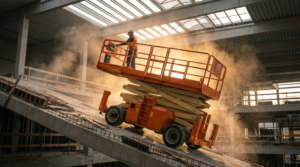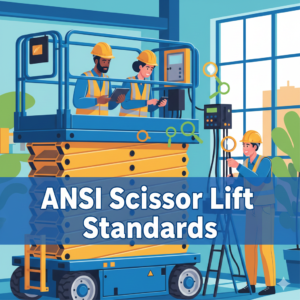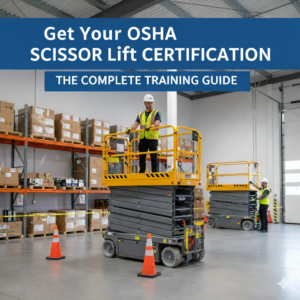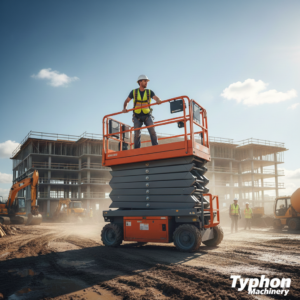Scissor lifts serve as invaluable tools in various industries, facilitating safe and efficient access to elevated work areas. However, their usage entails inherent risks that necessitate stringent safety protocols. Whether you’re considering scissor lift hire for a construction project or maintenance tasks, adhering to safety guidelines is paramount. In this guide, we outline ten essential safety protocols to enhance workplace safety and mitigate potential hazards associated with scissor lift operations.
Create a Safe Work Area
Prior to commencing any tasks involving a scissor lift, it’s imperative to assess and prepare the work area meticulously. This involves identifying and removing obstacles, debris, and loose materials that could impede the lift’s movement or compromise its stability. Clearly mark off the work area to ensure unrestricted maneuverability and minimize the risk of accidents or damage to the equipment.
Weight Capacity and Distribution
Understanding the weight capacity of the scissor lift is fundamental to safe operation. Adhere strictly to the manufacturer’s guidelines regarding maximum loading capacity, and ensure even distribution of weight across the platform. Overloading or uneven distribution can destabilize the lift, leading to tipping hazards and compromising operator safety.
Operator Training
Competent and trained personnel are indispensable for safe scissor lift operations. Operators must undergo comprehensive training to familiarize themselves with equipment controls, stability maintenance, and emergency procedures. Regular training sessions ensure operators are equipped to handle various scenarios effectively and prioritize safety at all times.
Avoid Unintended Movement
Mitigating the risk of unintended movement is crucial for maintaining a safe work environment. Operators must diligently engage the scissor lift’s brakes, especially when workers are on the platform. Familiarize yourself with equipment controls to prevent inadvertent activation that could result in hazardous movements or accidents.
Learn More: MOVEABLE SCISSOR LIFT: DEFINITION, SPECIFICATIONS, USES & ADVANTAGES
Use the Proper Platform Access
Utilizing designated access points for entering and exiting the platform is imperative for minimizing risks. Avoid reckless behavior such as climbing or jumping on and off the platform, as this can lead to avoidable accidents and injuries. Adhering to proper access protocols promotes a culture of safety and reduces the likelihood of workplace incidents.
Work at Safe Heights and Angles
Operating the scissor lift within recommended height limits is essential for maintaining stability and preventing accidents. Avoid exceeding reach limits, as this can compromise the lift’s balance and increase the risk of tipping. Additionally, consider the ground’s angle and slope, opting for level terrain whenever possible to enhance stability and operator safety.
Plan for Emergencies
Despite precautionary measures, emergencies can still occur in the workplace. It’s imperative to have a comprehensive emergency response plan in place, including procedures for providing first aid and rescuing operators in the event of equipment failure or accidents. Preparedness minimizes the impact of emergencies and facilitates swift, effective responses to mitigate risks.
Ongoing Maintenance
Regular maintenance is essential for ensuring the optimal performance and safety of scissor lifts. While equipment rental companies typically handle long-term maintenance, operators should conduct basic inspections and repairs as needed during the hire period. This includes checking hydraulic fluid levels, inspecting tires, and lubricating moving parts to prevent malfunctions and ensure safe operation.
Pre-Operation Inspection
Prior to initiating any tasks, conduct a thorough inspection of the scissor lift to identify potential issues or defects. Check for visible signs of damage, assess the functionality of hydraulic systems and safety features, and promptly report any anomalies to the rental company. Proactive inspection minimizes the risk of equipment failure during operations and enhances overall safety.
Learn More: KNOW THE DIFFERENCE BETWEEN SCISSOR AND AERIAL LIFTS
Appropriate Personal Protective Equipment (PPE)
Lastly, wearing appropriate personal protective equipment (PPE) is imperative for safeguarding against potential hazards. Operators and workers should don hard hats, safety harnesses, sturdy work boots, high-visibility clothing, and other relevant PPE to mitigate risks of falls or injuries from falling objects. Prioritizing PPE usage enhances workplace safety and minimizes the severity of injuries in the event of accidents.
Conclusion:
By adhering to these ten safety protocols, stakeholders can elevate safety standards and foster a secure working environment when utilizing scissor lifts. Prioritizing safety not only safeguards personnel but also enhances operational efficiency and minimizes downtime associated with accidents or equipment malfunctions. Embracing a proactive approach to safety ensures that scissor lift operations remain conducive to productivity and well-being in diverse workplace settings.





